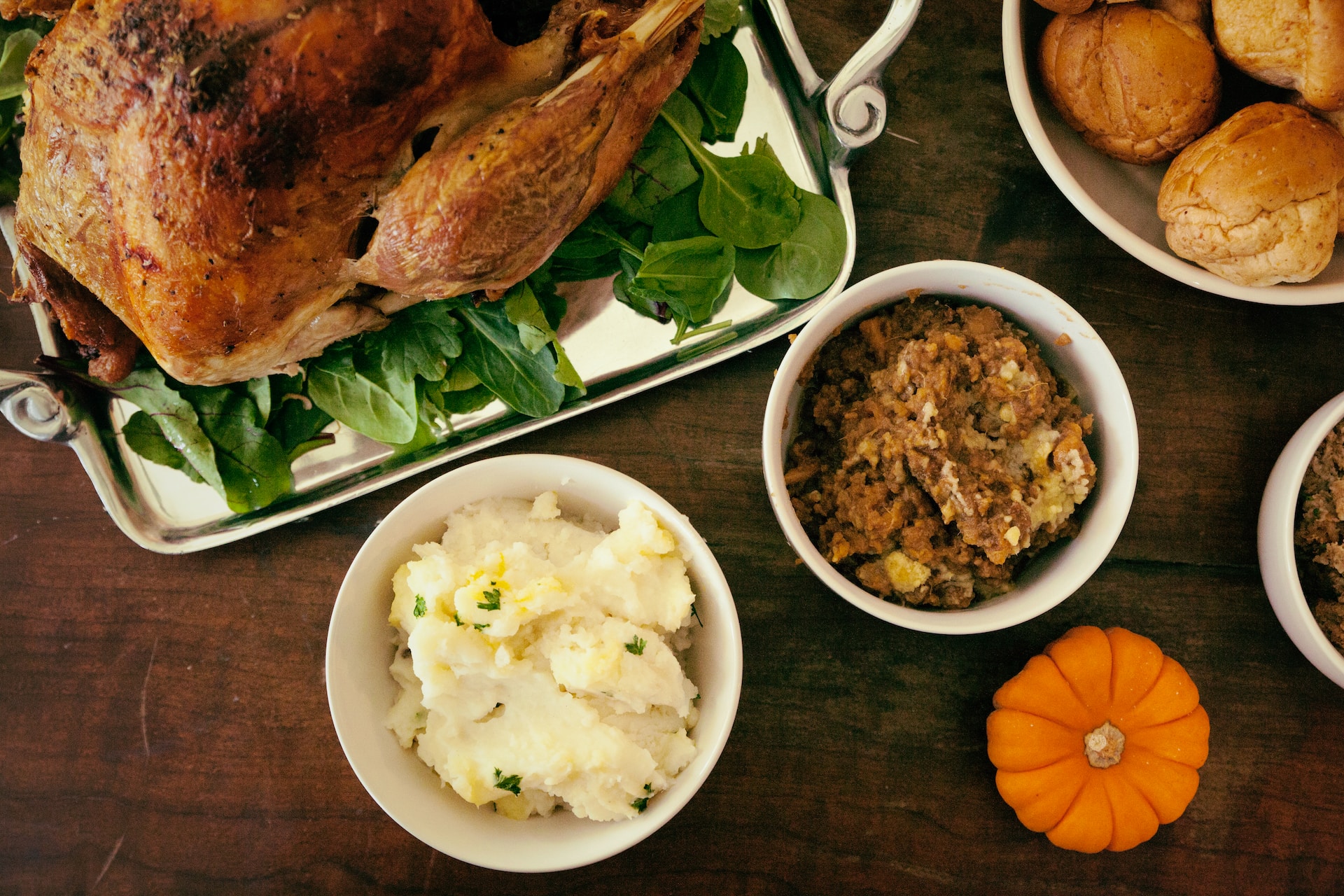Thanksgiving is a national holiday in the United States and Canada that commemorates the harvest and other blessings of the past year. It is celebrated on the fourth Thursday of November in the United States and on the second Monday of October in Canada. But how did this tradition originate and evolve over the centuries? Here is a brief overview of the history of Thanksgiving and its significance.
The First Thanksgiving
The origins of Thanksgiving can be traced back to the early 17th century, when a group of English separatists, known as the Pilgrims, fled religious persecution in their homeland and sailed across the Atlantic Ocean on a ship called the Mayflower. They arrived at Cape Cod in present-day Massachusetts in November 1620 and established a settlement at Plymouth. However, they faced many hardships and challenges in their new environment, such as harsh weather, disease, and food scarcity. Half of them died during the first winter.
Fortunately, they were not alone. They encountered a Native American tribe called the Wampanoag, who had lived in the region for thousands of years. The Wampanoag taught the Pilgrims how to plant corn, beans, and squash, how to hunt and fish, and how to identify edible plants and herbs. They also helped them forge a peace treaty with other neighboring tribes.
In the fall of 1621, after a successful harvest, the Pilgrims decided to celebrate and thank God for their survival and prosperity. They invited their Wampanoag allies to join them in a three-day feast, which is widely regarded as the first Thanksgiving in America. The menu included turkey, venison, corn, pumpkin, and other local foods. The event was also a symbol of friendship and harmony between the two cultures.
The Evolution of Thanksgiving
The first Thanksgiving was not a regular or annual occurrence. It was a spontaneous and informal celebration that was not repeated in the following years. However, giving thanks for the harvest and other blessings continued in various forms and occasions throughout the colonies and states. Some of these occasions were religious, while others were secular or political. For example, in 1630, the Massachusetts Bay Colony governor John Winthrop proclaimed a day of thanksgiving after the safe arrival of a ship. In 1777, the Continental Congress declared a National Day of Thanksgiving after a victory over the British at Saratoga. In 1789, President George Washington proclaimed a day of thanksgiving and prayer to mark the ratification of the Constitution.
However, it was not until the 19th century that Thanksgiving became a fixed and official national holiday. One of the main advocates for this was Sarah Josepha Hale, a prominent writer and editor who campaigned for a unified and annual Thanksgiving for over three decades. She wrote letters to presidents, governors, and other influential figures, urging them to establish a National Day of Gratitude and Unity. She also published recipes, stories, and poems about Thanksgiving in her popular magazine, Godey’s Lady’s Book.
Her efforts finally paid off in 1863, when President Abraham Lincoln, amid the Civil War, proclaimed the last Thursday of November as a National Day of Thanksgiving and praise to God. He hoped that this would help heal the wounds of the nation and restore peace and harmony. Since then, Thanksgiving has been observed every year in the United States, with some minor changes and variations. In 1939, President Franklin D. Roosevelt moved the date to the third Thursday of November to extend the Christmas shopping season and boost the economy. However, this caused confusion and controversy, and in 1941, Congress passed a law to restore the original date of the fourth Thursday of November.
In Canada, Thanksgiving has a different history and date. The first Canadian Thanksgiving is believed to have taken place in 1578 when the English explorer Martin Frobisher and his crew held a ceremony of thanks for their safe arrival in Newfoundland. Later, in 1606, the French settlers in Nova Scotia established the Order of Good Cheer, a social club that organized feasts and festivities to celebrate the harvest and the friendship with the local Mi’kmaq people. In 1763, after the Seven Years’ War, the residents of Halifax held a day of thanksgiving for the end of the conflict. In 1879, the Canadian Parliament declared a National Day of Thanksgiving to be observed on November 6. However, the date was changed several times over the years, until 1957, when it was fixed to the second Monday of October.
The Significance of Thanksgiving
Thanksgiving is more than just a day of eating and drinking. It is a day of reflecting and expressing gratitude for the many gifts and blessings of life, such as family, friends, health, freedom, and nature. It is also a day of celebrating and honoring the diverse and rich cultural heritage of the nation, and the contributions and sacrifices of the people who shaped its history and identity. It is also a day of reaching out and sharing with those who are less fortunate, and promoting peace and harmony among all.
Thanksgiving is a holiday that has a long and complex history, and that has evolved and adapted to the changing times and circumstances. It is a holiday that reflects the values and traditions of the American and Canadian people and inspires them to be thankful and hopeful for the future.
A Happy Thanksgiving Surprise
Lisa was not looking forward to Thanksgiving this year. She had just moved to a new city for her job, and she had no friends or family nearby. She had planned to spend the holiday alone in her apartment, watching Netflix and eating pizza. She felt lonely and homesick, and she wished she could go back to her hometown and celebrate with her parents and siblings.
However, fate had other plans for her. On the Wednesday before Thanksgiving, she received a phone call from her boss, who asked her to work on an urgent project that was due on Friday. Lisa had no choice but to accept, even though she was disappointed and frustrated. She had to cancel her pizza order and head to the office, where she spent the whole night and the next morning working on the project.
She was exhausted and hungry, and she decided to take a break and go to the cafeteria for some coffee and a sandwich. As she was walking down the hallway, she heard a familiar voice calling her name. She turned around and saw her brother, Matt, standing in front of her. He was holding a large cardboard box and a big smile on his face.
“Matt! What are you doing here?” Lisa exclaimed as she ran to hug him.
“Happy Thanksgiving, sis!” Matt said as he hugged her back. “I have a surprise for you!”
He opened the box and revealed a roasted turkey, mashed potatoes, stuffing, cranberry sauce, and pumpkin pie. He had cooked them himself and brought them from their hometown. He also had a bottle of wine and some flowers.
“I know you couldn’t come home for Thanksgiving, so I decided to bring Thanksgiving to you!” Matt said. “I took a flight this morning and rented a car. I’m staying at a hotel nearby. I hope you don’t mind.”
Lisa was speechless. She couldn’t believe that her brother had done all this for her. She felt tears of joy and gratitude in her eyes. She hugged him again and thanked him profusely.
“Matt, you are the best brother ever!” Lisa said. “This is the best surprise ever! Thank you so much!”
They carried the box to Lisa’s office, where they set up a makeshift table and chairs. They enjoyed the delicious meal and the wine, and they chatted and laughed like old times. They shared stories and memories, and they caught up on each other’s lives. They also video-called their parents and siblings, who were happy to see them and wished them a happy Thanksgiving.
Lisa felt a warm and cozy feeling in her heart. She realized that she was not alone and that she had a loving and caring family who supported her and missed her. She felt thankful for her brother, who had gone out of his way to make her happy. She felt thankful for her job, which gave her opportunities and challenges. She felt thankful for her life, which was full of surprises and blessings.
She smiled and raised her glass. “Happy Thanksgiving, Matt!” she said.
“Happy Thanksgiving, Lisa!” Matt said.
They clinked their glasses and toasted to their happiness. They had a wonderful and memorable Thanksgiving, and they felt closer than ever.





